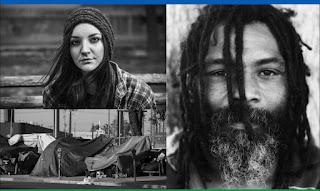Types of Homelessness
Shelter and safe housing should be human rights however it continues as a global problem, leaving an estimated 1.6 billion people (2020, UN-Habitat) under inadequate housing conditions and 15 million facing forced evictions.
Homelessness could happen to anyone, but the reasons for losing housing and experience living differ for each person. Generally in the United States the un housed populated exists in 4 groups.
1 Transitional Homelessness
Transitional homelessness is usually due to sudden life changes or events such as a fire or flood. Those who face this type of homelessness often still have jobs but are unable to afford other housing and living costs. This type of homelessness is often faced by younger populations, who may be more vulnerable under this condition. Additionally those in the LGBTQ community face further challenges as they are vulnerable to discrimination. One of the most common factors contributing to LGBTQ homeless is family harassment and discrimination based on gender and sexual identity.
2 Episodic Homelessness
Those facing episodic homelessness experience 3 bouts of homelessnesses within the last year. These individuals often are dealing with conditions such as mental or physical illness or substance abuse that makes keeping longer term housing or employment more difficult. In some cases individuals facing episodic homelessness have temporary or seasonal jobs. Without adequate support episodic homelessness can evolve into chronic homelessness.
3Chronic Homelessness
Those experiences chronic homelessness often have disabling conditions leaving them unhoused for over a year. Those facing chronic homelessness tend to be older, with complex chronic illnesses and are may be less likely to seek housing in shelters. Chronically unhoused individuals increased by nearly 15% between 2019 and 2020 and make up about 27% of the unhoused population.
4 Hidden Homelessness
Those who face hidden homelessness do not have a permanent home, instead relying on couch surfing and friends for support. These individuals are often not included in many national statistics, considering them “hidden” from support and resources. Many of those facing hidden homelessness are youths with scare resources, who may have experienced trauma, harassment, or drastic changes in their lives leading them to seek alternative housing.
Regardless of what may have lead someone to homelessness, the hardships they face while being unhoused only work to perpetuate the issue. To fix homelessness, permanent supporting health and housing resources must be run with the aim of helping individuals achieve long term housing stability. The US department of Housing and Urban Development, reported that investments made toward these program in 2007 led to an 8% decrease in the chronically unhoused population. Further investments towards permanent initiatives are likely to further decrease the unhoused population and overtime decrease state costs.



Comments
Post a Comment